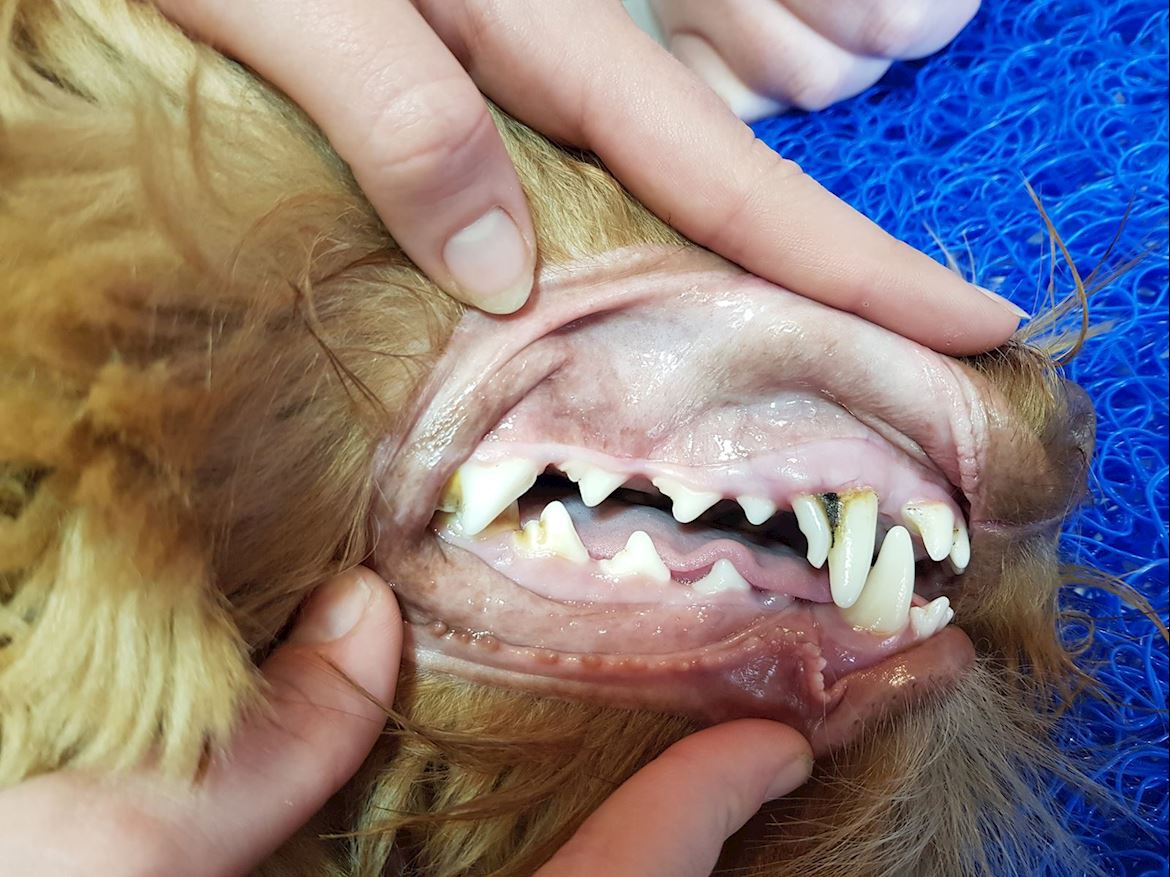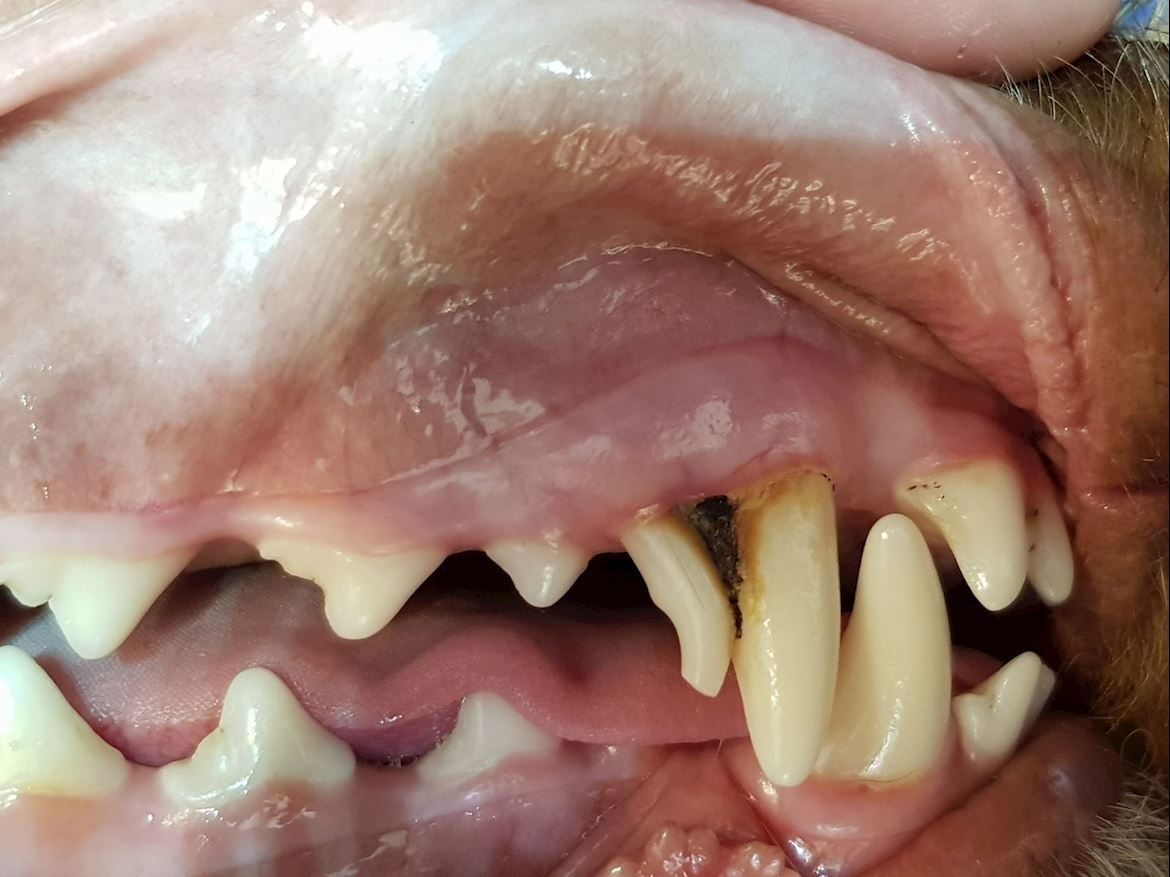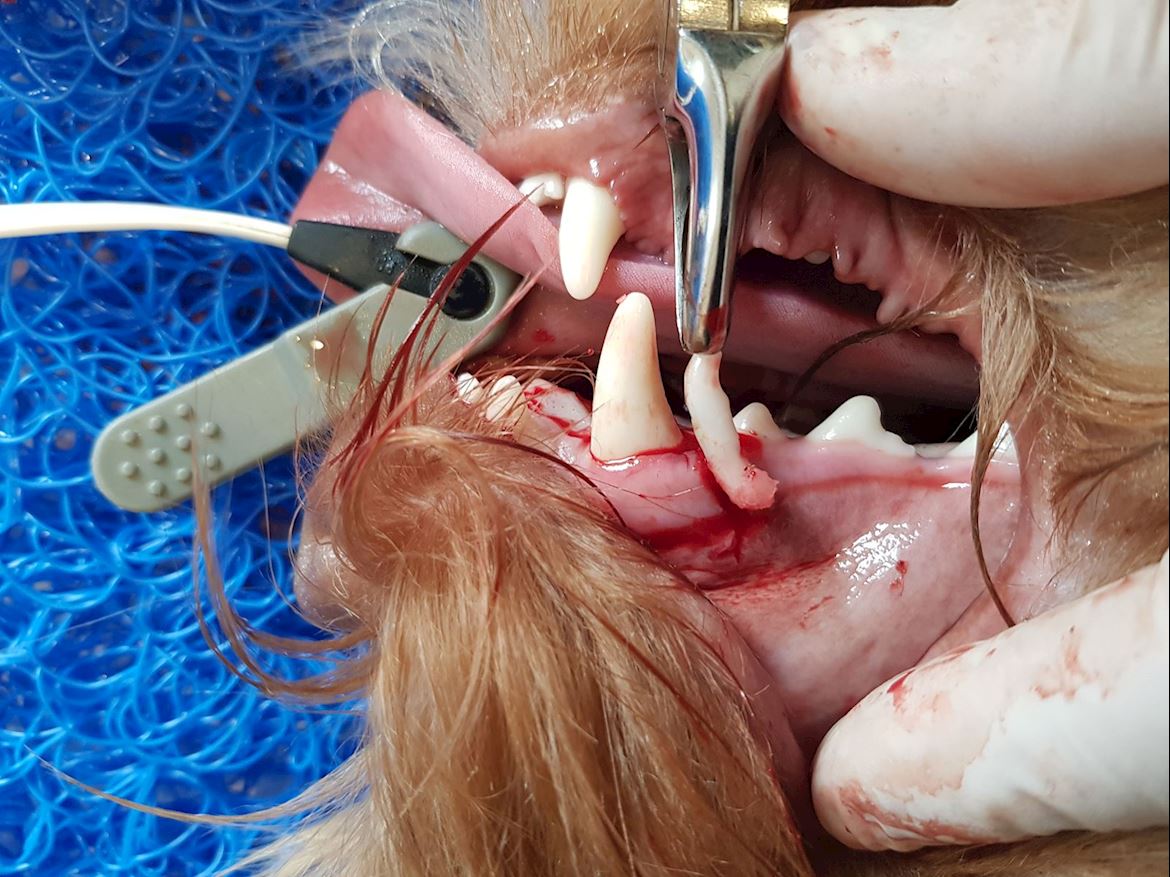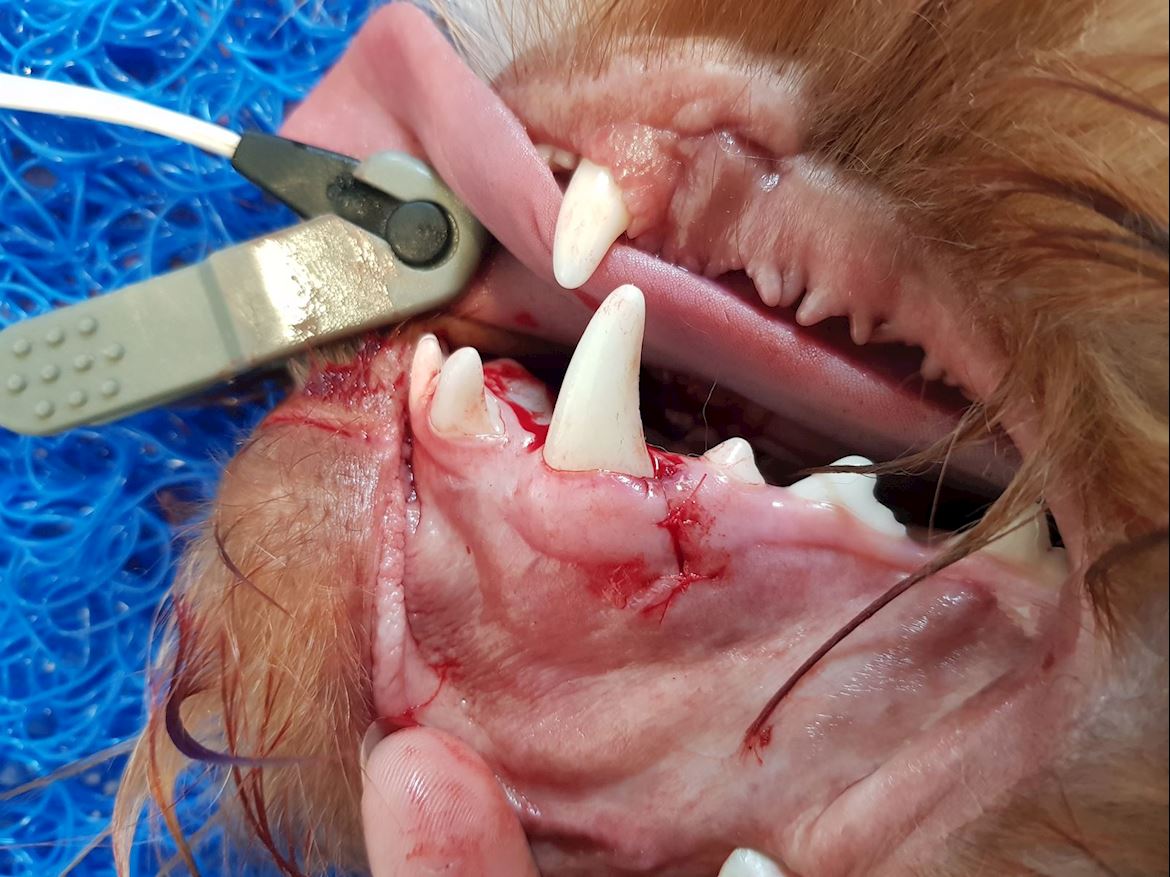Retained Milk Teeth (Baby Teeth) In Dogs
Retained deciduous (or baby) teeth in dogs can be a common problem and will need veterinary attention.
How many sets of teeth do dogs have?
Dogs have two sets of teeth in their lifetime. There are 28 deciduous teeth, also known as their baby teeth, puppy milk teeth , or puppy teeth, and 42 permanent teeth, also known as their adult teeth.

Above: A Groodle Patient from May 2018 – note the food collecting between the milk and adult tooth.
When do puppies get their deciduous teeth?
Puppies are born without any visible teeth. The “puppy milk teeth” start erupting through the gums around three weeks of age and are normally finished erupting by four months of age.
The ideal time to begin brushing a puppy’s teeth is when you first bring him home, before the discomfort of teething begins. Your veterinary dental vet , can help you methods of dental care for your puppy.
When do puppies get their permanent teeth?
Teething begins in puppies at about 3 months , when the primary incisors begin to be replaced by permanent incisors. By the time the average puppy reaches 7 months of age, all 42 adult teeth will be present.
What happens during teething?
As the adult teeth push through the gums, the crowns of the baby teeth fall out. You may even find teeth on the floor, but more often than not the teeth will fall out while the pup is eating and he will swallow them with the rest of his food. The red holes in the gums are easily seen.
Puppies will have the urge to chew when they are teething.
What is a retained tooth?
A retained tooth is a deciduous or baby tooth that is still present in the mouth after its replacement permanent or adult tooth has erupted.

Above: The tooth – and after long gum flap is made and the tooth is gently elevated and luxated, so as to extract the entire root, and not damage the adult tooth.
Below: Note how long the root is!

Which deciduous teeth are more commonly retained?
The most common teeth to be retained are the upper canine teeth, followed by the lower canine teeth and the incisors. However, in some cases, the premolar teeth may also be retained.
Retained teeth are more common in small breed dogs, and in dogs that have pushed-in faces such as bulldogs, pugs, Boston terriers, and boxers.
What problems are caused by retained teeth?
Food and debris will become trapped between the teeth. This can lead to problems such as tartar deposits, tooth decay, gingivitis and periodontitis, all of which can lead to premature loss of teeth. If the root of the retained tooth has only been partly resorbed, it can become badly infected.


Above: Stitching the delicate tissues of the puppy Gums (Using 5/0 suture) – note the neat final result – after a gentle extraction of a retained canine tooth.
If teeth are malpositioned, they can rub against other teeth, wearing away the enamel and weakening the tooth.
If the retained tooth is a lower canine, the permanent lower canine is forced to grow on the inside of the lower jaw and its tip usually grows towards the roof of the mouth, causing pain and damage which makes it difficult for your dog to eat.
When and how are retained teeth treated?
Early extraction in these cases will usually allow the adult teeth to move into their proper positions.
What happens if there is a delay before the retained tooth is extracted?
If the retained primary tooth is not extracted in a timely manner, it is unlikely that the adult teeth will be able to move into their proper positions without orthodontic treatment.

Above: This is about 1.5 hours after the dental surgery – our patient is alert and awake and very interested in our next patient.
In addition to regular tooth brushing, it is important to check your puppy’s mouth every week until about seven to eight months of age to ensure that his teeth are growing normally.
Based on information from :
Veterinary Dental Specialist Dr Jan Bellows.
